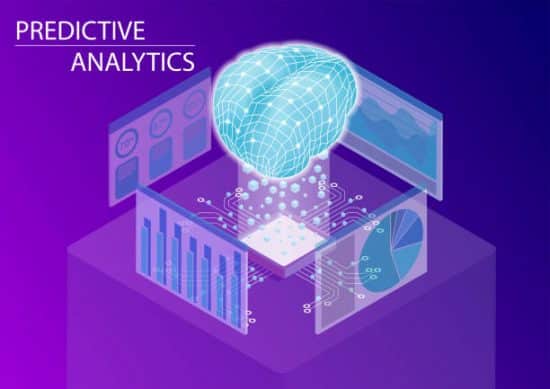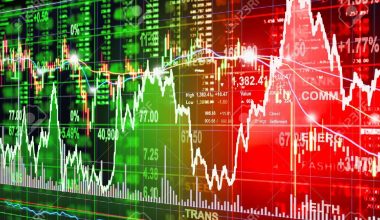According to Google Trends, interest in predictive analytics has consistently increased over the last five years.
Predictive analytics (also known as advanced analytics) is increasingly being linked to business intelligence. But are the two actually related, and if so, what advantages do businesses gain by merging their business intelligence activities with this analytics? What is the difference between business intelligence and predictive analytics? Let’s answer the questions and also see a real-world example of predictive analytics in this article.
What Is Predictive Analytics?
The use of historical data, machine learning, and artificial intelligence to anticipate what will happen in the future is referred to as predictive analytics. This historical data is loaded into a mathematical model, which takes into account major trends and patterns in the data. After that, the model is applied to current data to predict what will happen next.
Using predictive analytics data can assist businesses—and business applications—suggest actions that can result in beneficial operational changes. Predictive analytics can help analysts estimate whether a change will help them decrease risks, improve operations, and/or boost revenue. Predictive analytics, at its core, seeks to answer the question, “What is most likely to happen based on my present data, and what can I do to modify that outcome?”
Real-World Predictive Analytics in Business Intelligence Example
Predictive analytics is nothing new for many businesses. However, it is increasingly being employed by a variety of industries to improve day-to-day corporate processes and generate competitive differentiation.
In practice, predictive analytics can take a variety of shapes. Consider the following possibilities.
- Determine which customers are likely to abandon a service or product. Consider a yoga studio that has implemented a predictive analytics model. Based on prior data, the algorithm may predict that ‘Jane’ will not renew her membership and recommend an incentive that will entice her to do so. When Jane returns to the studio, the system will send an alert to the membership relations team, who will offer her an incentive or speak with her about renewing her membership. In this example, predictive analytics can be used in real-time to prevent customer churn.
- Send marketing messages to customers who are most likely to purchase. If your company only has $5,000 to spend on an upsell marketing campaign and has three million consumers, you can’t afford to give each one a 10% discount. Predictive analytics and business intelligence can help anticipate the customers who are most likely to buy your goods, and then distribute the coupon just to those people to maximize income.
- Improve customer service by proper planning. Businesses may better estimate demand by utilizing advanced analytics and business intelligence. Consider a hotel company that wants to forecast how many people will stay in a specific location this weekend so that they can ensure they have enough employees and resources to meet demand.
Applications of Predictive Analytics
Predictive analytics is a decision-making tool used in a range of businesses.
#1. Forecasting
Forecasting is critical in manufacturing because it guarantees that they use resources in a supply chain optimally. Inventory management and the shop floor, for example, are critical spokes of the supply chain wheel that require accurate forecasts to function.
Predictive modeling is frequently used to clean and optimize the quality of data utilized for such forecasts. Modeling guarantees that additional data, including data from customer-facing activities, may be consumed by the system, resulting in a more accurate forecast.
#2. Credit
Credit rating utilizes predictive analytics. When a consumer or business applies for credit, information from the applicant’s credit history and the credit records of borrowers with similar characteristics are used to predict the risk that the applicant will fail to repay any credit extended.
#3. Underwriting
Underwriting is heavily reliant on data and predictive analytics. Insurance companies investigate policy applicants to determine the likelihood of having to pay out for a future claim based on the current risk pool of similar policyholders, as well as previous events that resulted in payouts. Actuaries commonly utilize predictive models that compare attributes to data regarding previous policyholders and claims.
#4. Marketing
When planning a new campaign, people in this field consider how consumers have reacted to the overall economy. They can use demographic shifts to determine whether the current product mix will entice consumers to make a purchase.
Meanwhile, active traders consider a variety of metrics based on past events when deciding whether to buy or sell a security. Moving averages, bands, and breakpoints are on the basis of the previous data and are used to estimate price fluctuations in the future.
The most common predictive models are decision trees, regressions (linear and logistic), and neural networks, which are part of the emerging field of deep learning methods and technologies.
Types of Predictive Analytics Models
Predictive analytics employs three techniques: decision trees, neural networks, and regression. Read on to learn more about each of these.
#1. Decision Trees
If you want to understand what drives someone’s decisions, decision trees can help. This model divides data into parts depending on certain variables such as price or market capitalization. It resembles a tree, as the name says, with distinct branches and leaves. Branches reflect the various options accessibly, and individual leaves represent a specific selection.
Because they are straightforward to comprehend and analyze, decision trees are the most basic models. They’re also quite beneficial when you need to make a decision quickly.
#2. Regression
This is the most common model in statistical analysis. When you need to find patterns in big amounts of data and there is a linear relationship between the inputs, use it. This method works by calculating a formula that describes the relationship between all of the inputs in the dataset. For example, you can use regression to determine how price and other important factors influence a security’s performance.
#3. Artificial Neural Networks
Neural networks creation as a type of predictive analytics was by mimicking the way the human brain operates. Using artificial intelligence and pattern recognition, this model can deal with complex data interactions. Use it when you have multiple obstacles to overcome, such as when you have too much data, don’t have the formula you need to help you identify a relationship between the inputs and outputs in your dataset, or when you need to make predictions rather than come up with explanations.
If you’ve already utilized decision trees and regression as models, you can employ neural networks to corroborate your findings.
How Can Businesses Make Use of Predictive Analytics?
As previously said, predictive analysis can be applied in a variety of different applications. Businesses can use models to advance their goals and improve their operations. Businesses commonly employ predictive models to assist them to enhance their customer service and outreach.
Executives and business owners utilize this type of statistical analysis to determine customer behavior. For example, the owner of a business can utilize predictive techniques to identify and target regular consumers who may defect and go to a competitor.
It is important in advertising and marketing. Models can be used by businesses to predict which clients are likely to respond positively to marketing and sales activities. Instead of performing broad marketing, business owners can save money by targeting clients who will respond positively.
Advantages of Predictive Analytics
Predictive analysis has numerous advantages. As previously stated, using this type of analysis can assist entities when making predictions about outcomes when no other (and obvious) answers are available.
Models can help investors, financial professionals, and business leaders reduce risk. For example, an investor and their adviser can utilize specific predictive analytics models to assist design an investment portfolio with the least amount of risk to the investor by taking into account aspects such as age, capital, and ambitions.
When they utilize these models, there is a considerable impact on cost savings. Businesses can predict if a product will succeed or fail before they release it. Alternatively, they can set aside funds for production enhancements by employing predictive techniques before the manufacturing process begins.
Criticism of Predictive Analytics
Due to perceived inequities in its outcomes, the use of predictive analytics has been criticized and, in some cases, legally restricted. Most commonly, this involves predictive models that result in statistical discrimination against racial or ethnic groups in areas such as credit scoring, home lending, employment, or risk of criminal behavior.
A well-known example of this predictive analytics is the (now-illegal) practice of redlining in home lending by banks. Regardless of whether the predictions derived from the use of such analytics are accurate, their use is generally frowned upon, and data that explicitly include information such as a person’s race are now frequently excluded from predictive analytics.
Conclusion
All businesses may profit from utilizing predictive analytics to collect data on customers and predict the next steps based on past behavior. One can use this data to make decisions that affect the bottom line and influence performance.
FAQ’s on Predictive Analytics
What is predictive analytics in data analytics?
Predictive analytics is a type of data analytics that uses historical data and analytics techniques such as statistical modeling and machine learning to forecast future results.
What is predictive analytics in HR?
Predictive analytics in HR refers to HR technology that employs statistics and learns from existing data to anticipate future results. It is a decision-making tool.
Why is predictive analytics analysis the next logical step in any business analytics BA process?
Predictive analytics analysis is regarded as the next logical step in any business analytics because it optimises marketing campaigns by determining customer responses or purchases, as well as promote cross-sell opportunities and thus improve business operations by forecasting inventory and managing resources.
- Predictive vs Prescriptive Analytics, Explained!!! (+ Detailed Guide)
- Types of Analytics: How to Apply them in any Business
- Prescriptive Analytics Tools & Techniques: 9+ Best 2021 Options
- Prescriptive Analytics: Definition, Real-World Examples, How it Works
- FORECASTING MODELS: Types and Detailed Guide to the Models






